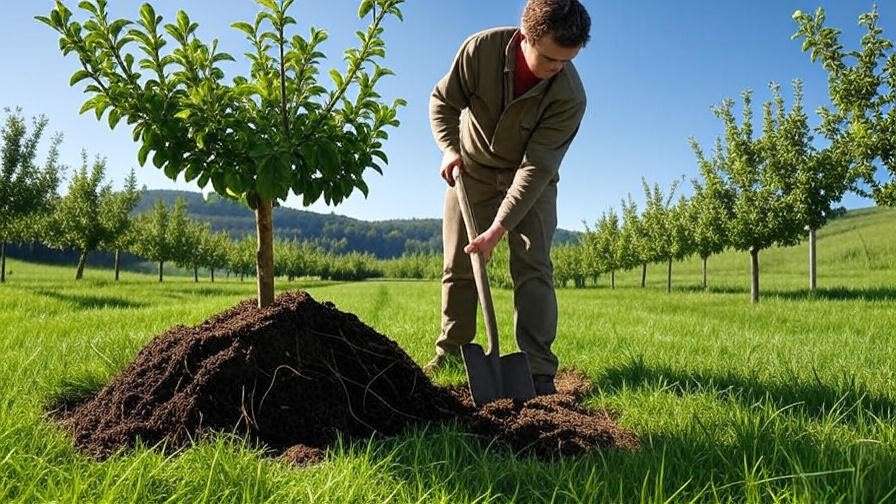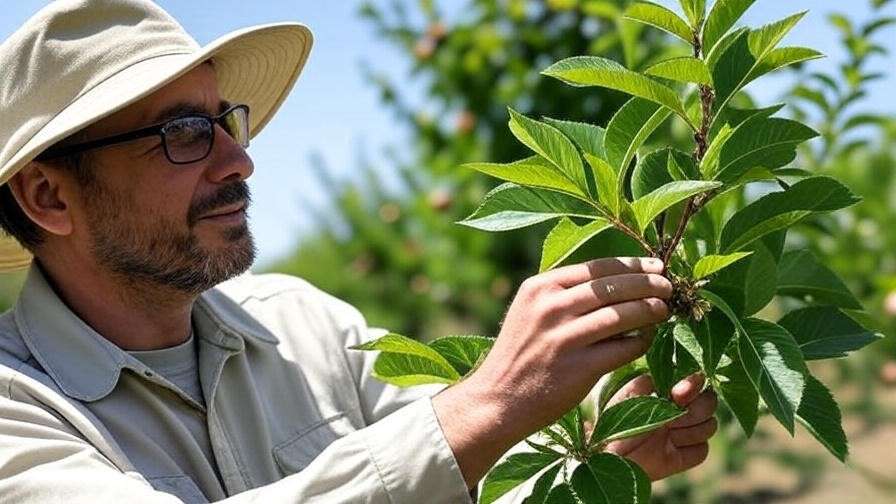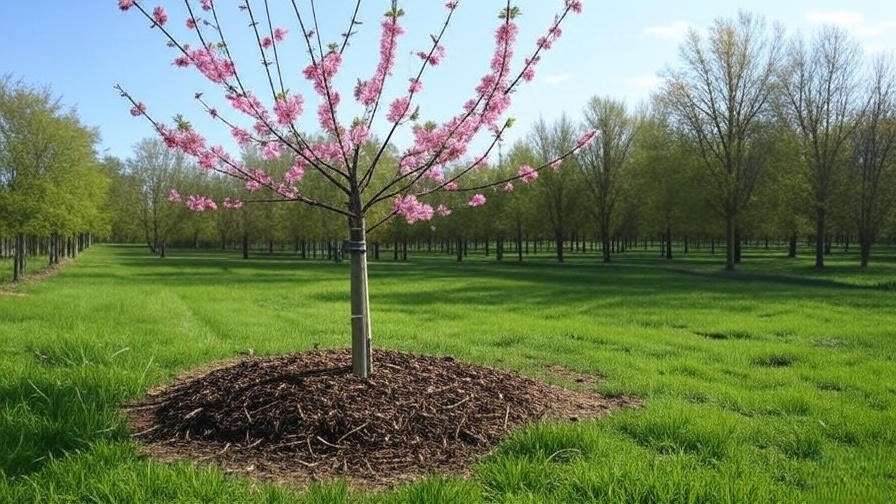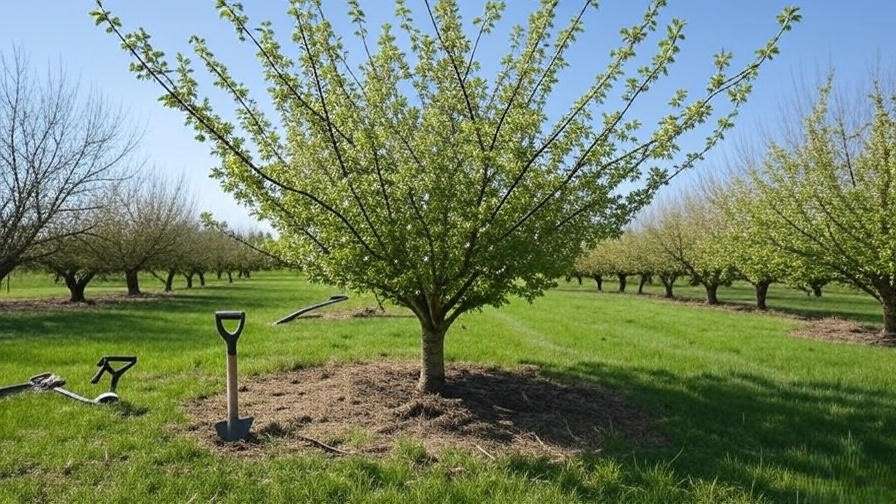Picture this: You’ve just planted a young cherry tree in your backyard, envisioning a future filled with juicy, homegrown cherries. But as the seasons pass, you notice stunted growth, yellowing leaves, or pesky pests. Sound familiar? Learning how to care for young cherry trees and promote healthy growth is the key to turning that vision into reality. Whether you’re a novice gardener or an orchard enthusiast, proper care during a cherry tree’s early years lays the foundation for a thriving, fruitful tree. This comprehensive guide, backed by horticultural expertise, will walk you through every step—from selecting the perfect variety to nurturing robust growth—ensuring your cherry tree flourishes for years to come. 🌱🍒
In this article, we’ll cover site selection, planting techniques, essential care practices, pest management, and long-term strategies to help your young cherry tree thrive. With practical tips, expert insights, and a focus on sustainable practices, you’ll gain the confidence to grow a healthy orchard. Let’s dive in!
1. Understanding Young Cherry Trees: Why Early Care Matters 🍒
1.1 The Growth Stages of Cherry Trees 🌱
Young cherry trees, typically in their first 1–3 years, are in a critical juvenile phase. During this time, they focus on establishing strong roots and a sturdy framework rather than producing fruit. This stage sets the tone for their long-term health and productivity. Sweet cherry trees (Prunus avium), like Bing or Rainier, and tart cherry trees (Prunus cerasus), like Montmorency, have slightly different growth patterns. Sweet cherries often grow taller and require more space, while tart cherries are more compact and cold-hardy. Understanding these differences helps tailor your care approach.
Key Point: Early care shapes the tree’s ability to resist stress, diseases, and environmental challenges, ensuring a bountiful harvest in 3–5 years.
1.2 Benefits of Nurturing Young Cherry Trees 🌳
Investing time in young cherry tree care yields significant rewards:
- Disease Resistance: A strong, healthy tree is less susceptible to fungal infections like brown rot.
- Structural Strength: Proper pruning and training create a balanced canopy, reducing branch breakage.
- Higher Yields: Well-cared-for trees produce more fruit in their mature years.
- Sustainability: Healthy trees contribute to eco-friendly home orchards or commercial setups.
Expert Insight: “The first few years of a cherry tree’s life are like building a house’s foundation. Get it right, and you’ll enjoy decades of beauty and fruit,” says Dr. Emily Harper, a horticulturist with over 20 years of experience in fruit tree cultivation.
2. Choosing the Right Cherry Tree and Location 📍
2.1 Selecting the Best Cherry Tree Variety 🍒
Choosing the right cherry tree variety is crucial for success. Popular sweet varieties include:
- Bing: Known for dark, sweet cherries; thrives in USDA zones 5–8.
- Rainier: Yellow-red cherries with a mild flavor; ideal for warmer climates.
- Stella: Self-pollinating, great for small gardens.
Tart varieties, like Montmorency, are perfect for pies and preserves and tolerate colder climates (zones 4–7). Consider pollination needs: Most sweet cherries require a second tree for cross-pollination, while many tart cherries are self-pollinating. When buying from a nursery, inspect the tree for healthy roots, a strong graft union, and no signs of disease.
Tip: Contact your local extension service to find varieties suited to your region’s climate and soil.
2.2 Ideal Site Selection for Cherry Trees 🌞
Cherry trees thrive in specific conditions:
- Sunlight: At least 6–8 hours of direct sunlight daily for optimal photosynthesis.
- Soil: Well-draining, loamy soil with a pH of 6.0–7.0. Test your soil using a home kit or lab analysis.
- Location: Avoid low-lying areas prone to frost pockets or waterlogging, as cherry trees are sensitive to excessive moisture.
- Spacing: Plant trees 15–20 feet apart to ensure good air circulation and room for growth.
Pro Tip: Use this checklist to assess your site:
- 6+ hours of sunlight
- Well-draining soil
- pH between 6.0–7.0
- No standing water after rain
- Adequate spacing from other trees or structures
3. Planting Young Cherry Trees: Step-by-Step Guide 🌱
3.1 When and How to Plant 🕒
The best time to plant cherry trees is early spring or late fall, when the tree is dormant, and temperatures are cool. Follow these steps:
- Dig the Hole: Make it twice as wide and as deep as the root ball (about 2 feet wide and 1.5 feet deep).
- Prepare the Roots: Gently loosen tangled roots and remove any damaged ones.
- Position the Tree: Place the tree so the graft union (the bulge where the rootstock meets the scion) is 2–3 inches above the soil line.
- Backfill: Fill the hole with native soil mixed with compost, tamping lightly to remove air pockets.
- Water Thoroughly: Soak the soil to settle it around the roots.

Caution: Planting too deep can suffocate the roots, while planting too shallow can expose them to drying out.
3.2 Soil Preparation and Amendments 🧑🌾
Healthy soil is the backbone of a thriving cherry tree. Test your soil’s pH and nutrient levels before planting. If the pH is too acidic (below 6.0), add lime; if too alkaline (above 7.0), add sulfur. Incorporate 20–30% organic matter, such as compost or aged manure, to improve fertility and drainage. Avoid over-fertilizing in the first year, as young trees are sensitive to nutrient burn.
Example Soil Amendment Recipe:
- 60% native soil
- 30% compost or aged manure
- 10% coarse sand (for heavy clay soils)
4. Essential Care Practices for Young Cherry Trees 💧
4.1 Watering Needs for Optimal Growth 💦
Young cherry trees need consistent moisture to establish deep roots. Water deeply (1–2 inches) once or twice a week, depending on weather and soil type. Sandy soils require more frequent watering, while clay soils retain moisture longer. Use a soaker hose or drip irrigation to deliver water directly to the root zone. Watch for signs of trouble:
- Overwatering: Yellowing leaves, soggy soil, or root rot.
- Underwatering: Wilting leaves, dry soil, or stunted growth.
Tip: Insert a screwdriver into the soil; if it’s dry 6 inches down, it’s time to water.
4.2 Fertilizing Young Cherry Trees 🌿
Avoid fertilizing in the first year to prevent root burn. In the second year, apply a balanced fertilizer (e.g., 10-10-10) in early spring, just before bud break. Use 1/4 pound of fertilizer per tree, spread evenly in a ring 6–12 inches from the trunk. Organic options, like fish emulsion or compost tea, are gentler alternatives. Always water thoroughly after fertilizing to help nutrients reach the roots.
4.3 Mulching for Moisture and Weed Control 🌾
Mulching is a game-changer for young cherry trees. A 2–4-inch layer of organic mulch (wood chips, bark, or straw) conserves moisture, regulates soil temperature, and suppresses weeds. Apply mulch in a donut shape around the tree, keeping it 2–3 inches away from the trunk to prevent rot. Refresh the mulch annually to maintain its benefits.
Pro Tip: A properly mulched tree can reduce watering needs by up to 30%!

5. Pruning and Training Young Cherry Trees ✂️
5.1 Why Pruning is Essential for Young Trees 🌳
Pruning young cherry trees is critical for establishing a strong structure and promoting healthy growth. Proper pruning enhances air circulation, reduces disease risk, and encourages fruit-bearing branches in future years. Sweet cherry trees benefit from an open-center structure, which allows sunlight to penetrate the canopy, while tart cherries often thrive with a central leader system, creating a more upright shape. Early pruning also prevents issues like crowded branches or weak growth, setting the stage for a productive orchard.
Key Benefit: A well-pruned tree can increase fruit yield by up to 20% compared to an unpruned one, according to university extension studies.
5.2 When and How to Prune 🕰️
The best time to prune young cherry trees is late winter or early spring, just before bud break, when the tree is dormant. This minimizes stress and allows wounds to heal quickly. Follow these steps:
- Remove Suckers and Water Sprouts: Cut off vertical shoots from the base or trunk, as they steal energy from the tree.
- Eliminate Crossing Branches: Remove branches that rub or cross to prevent damage and improve airflow.
- Shape the Tree: For sweet cherries, aim for an open-center shape with 3–4 main scaffold branches. For tart cherries, maintain a central leader with evenly spaced lateral branches.
- Cut Back Weak Growth: Trim any thin, spindly branches to encourage stronger development.

Use sharp, clean pruning shears and make angled cuts just above a bud to promote healing. Avoid removing more than 25% of the tree’s canopy in a single season to prevent shock.
5.3 Tools and Safety Tips 🛠️
Invest in quality pruning tools, such as bypass pruners for small branches and loppers for thicker ones. Sanitize tools with a 10% bleach solution or rubbing alcohol between cuts to prevent disease spread. Wear gloves and safety glasses to protect yourself, especially when working with larger branches. For beginners, start with small cuts and consult a pruning guide or local arborist if unsure.
Expert Insight: “Pruning is an art and a science. Take your time to learn your tree’s growth habits, and you’ll be rewarded with a healthier, more productive orchard,” says Mark Thompson, a certified arborist with 15 years of experience.
Visual Aid Suggestion: Include a diagram showing proper pruning cuts for sweet vs. tart cherry trees to help visual learners.
6. Protecting Young Cherry Trees from Pests and Diseases 🐛
6.1 Common Pests Affecting Cherry Trees 🕷️
Young cherry trees are vulnerable to pests that can hinder growth or damage fruit. Common culprits include:
- Aphids: Small, sap-sucking insects that cause leaf curling. Control with neem oil or insecticidal soap.
- Cherry Fruit Flies: Lay eggs in developing fruit, leading to maggot infestation. Use sticky traps or organic sprays like spinosad.
- Spider Mites: Cause stippling on leaves, especially in hot, dry conditions. Increase humidity and apply horticultural oil.
Encourage natural predators like ladybugs and lacewings by planting companion plants such as marigolds or yarrow. Regularly inspect your tree for signs of pest activity, especially under leaves and near the trunk.

6.2 Common Diseases and How to Prevent Them 🦠
Cherry trees are susceptible to several diseases, particularly in humid climates:
- Brown Rot: A fungal disease causing fruit rot and blossom blight. Prevent by improving air circulation through pruning and applying a copper-based fungicide during bloom.
- Powdery Mildew: Appears as white patches on leaves. Use sulfur-based sprays and avoid overhead watering.
- Bacterial Canker: Causes sunken lesions on branches. Prune affected areas and disinfect tools to prevent spread.
Cultural practices are your first line of defense: ensure proper spacing, remove fallen leaves, and water at the base rather than overhead. For severe issues, consult a local extension service for region-specific recommendations.
Pro Tip: Follow this seasonal pest and disease prevention checklist:
- Spring: Apply dormant oil to smother overwintering pests.
- Summer: Monitor for pests weekly and apply organic treatments as needed.
- Fall: Clean up fallen leaves and fruit to reduce disease overwintering.
- Winter: Inspect for cankers and prune as necessary.
7. Promoting Healthy Growth: Long-Term Care Strategies 🌟
7.1 Supporting Young Trees with Stakes and Ties 🎋
Staking is often necessary for young cherry trees, especially in windy areas or loose soil. Use a sturdy wooden or metal stake, driving it 1–2 feet into the ground about 6 inches from the trunk. Tie the tree to the stake with soft, flexible ties, such as tree straps or old pantyhose, to avoid damaging the bark. Check ties monthly to ensure they’re not too tight. Remove stakes after 1–2 years, once the tree’s roots are established.
Caution: Over-staking can weaken the tree by preventing natural trunk strengthening. Only stake if the tree is unstable.

7.2 Monitoring Growth and Addressing Issues 📈
Regularly check your cherry tree for signs of healthy growth: new leaves, steady height increase, and firm branches. Common issues to watch for include:
- Yellowing Leaves: May indicate nutrient deficiency (e.g., nitrogen) or overwatering. Test soil and adjust care accordingly.
- Stunted Growth: Often caused by poor soil, insufficient water, or root damage. Dig carefully to inspect roots if growth is severely limited.
- Wilting: Can signal underwatering, root rot, or pest damage. Address immediately to prevent stress.
If problems persist, contact your local cooperative extension service or a certified arborist for a professional assessment.
7.3 Seasonal Care Calendar 📅
A consistent care routine ensures long-term success. Follow this seasonal guide:
- Spring: Plant new trees, prune, and apply a light fertilizer. Monitor for pests as buds emerge.
- Summer: Water deeply, check for pests and diseases, and refresh mulch. Thin any early fruit to reduce stress.
- Fall: Prepare for dormancy by reducing watering and protecting against early frosts with burlap wraps if needed.
- Winter: Inspect for storm damage and prune dormant trees. Avoid fertilizing during this time.
Downloadable Resource Suggestion: Create a printable seasonal care calendar for cherry tree owners, highlighting key tasks and timelines.
8. FAQs About Caring for Young Cherry Trees ❓
Q: How long does it take for a young cherry tree to bear fruit?
A: Most cherry trees begin producing fruit in 3–5 years, depending on the variety and care. Sweet cherries may take slightly longer than tart varieties.
Q: Can cherry trees grow in containers?
A: Yes, dwarf varieties like Stella or North Star are suitable for containers. Use a large pot (at least 15 gallons) with well-draining soil and ensure consistent care.
Q: What should I do if my cherry tree isn’t growing well?
A: Check for common issues like improper watering, poor soil, or pest damage. Test soil pH and nutrients, adjust care, and consult an expert if needed.
Q: How often should I water my young cherry tree?
A: Water deeply 1–2 times per week, adjusting for rainfall and soil type. Ensure the soil is moist but not waterlogged.
9. Conclusion: Your Path to a Thriving Cherry Orchard 🌸
Caring for young cherry trees may seem daunting, but with the right knowledge and consistent effort, you can nurture a healthy, productive orchard. From choosing the perfect variety to mastering pruning and pest control, each step builds a stronger foundation for your tree’s future. Stay patient, monitor your tree’s progress, and enjoy the journey of growing your own cherries. Soon, you’ll be savoring the fruits of your labor—literally! 🍒
Have questions or tips to share? Drop them in the comments below, or explore our related articles on mature cherry tree care and companion planting for orchards. Here’s to a flourishing cherry tree and a bountiful harvest! 🌳













